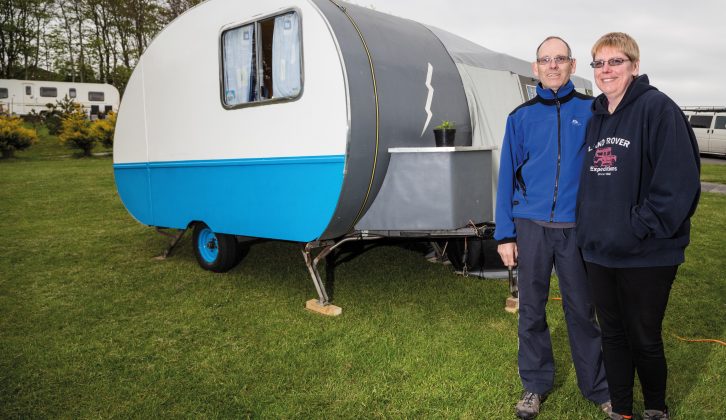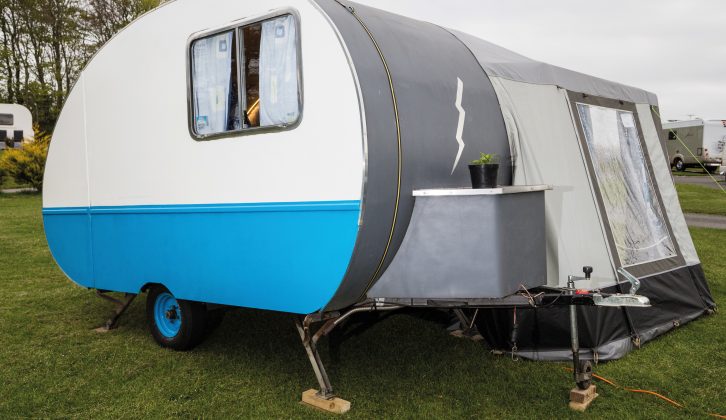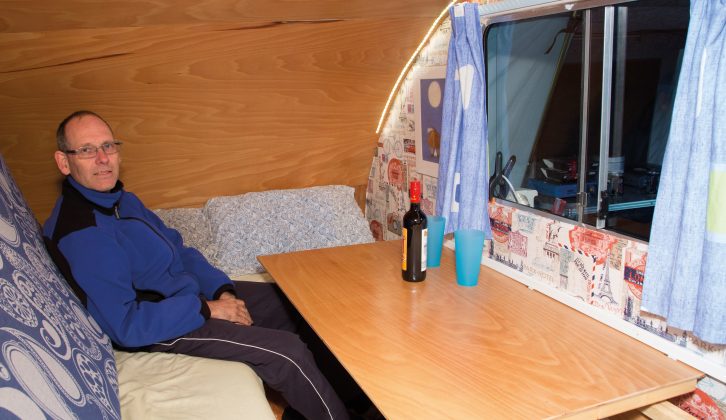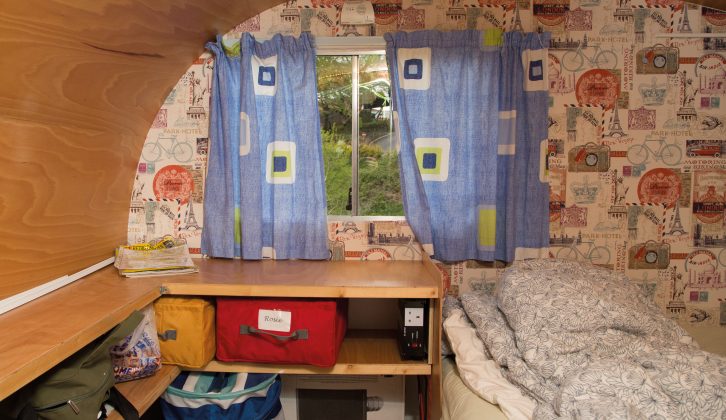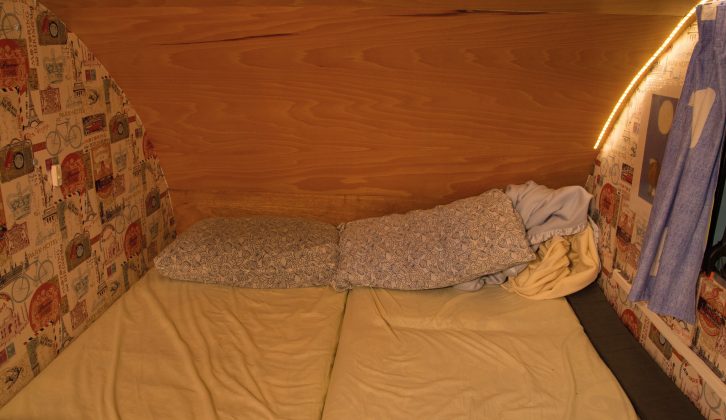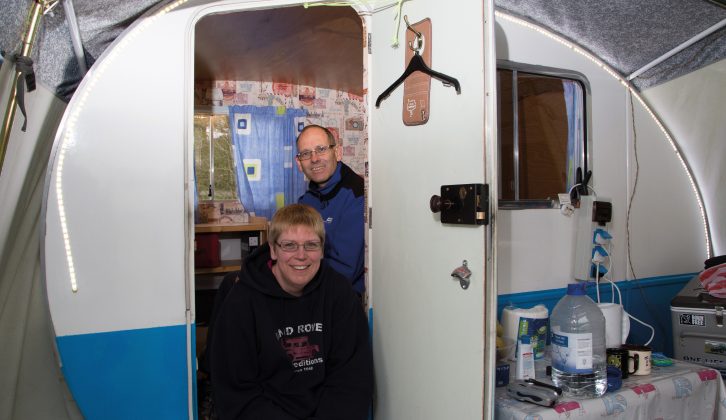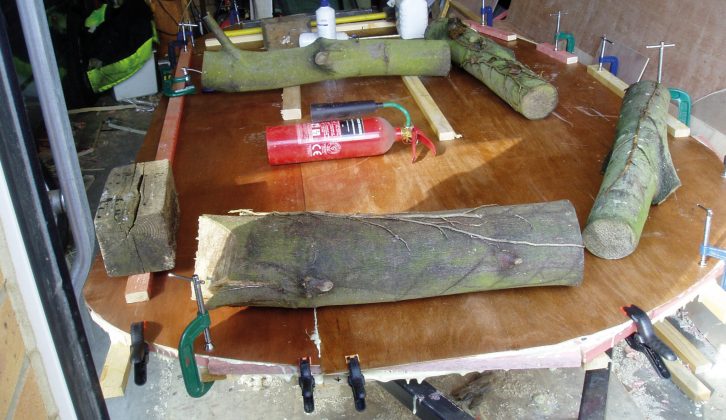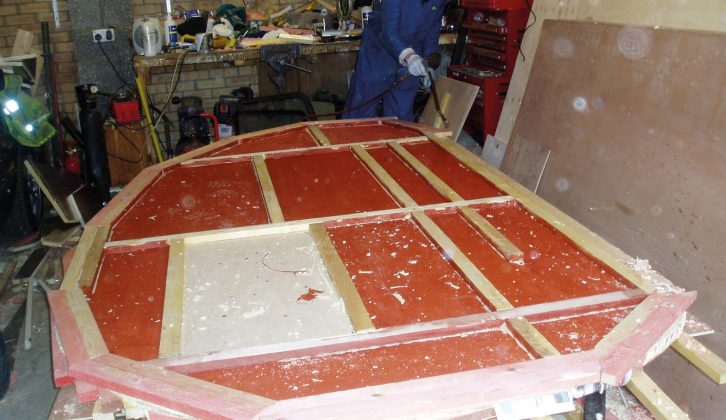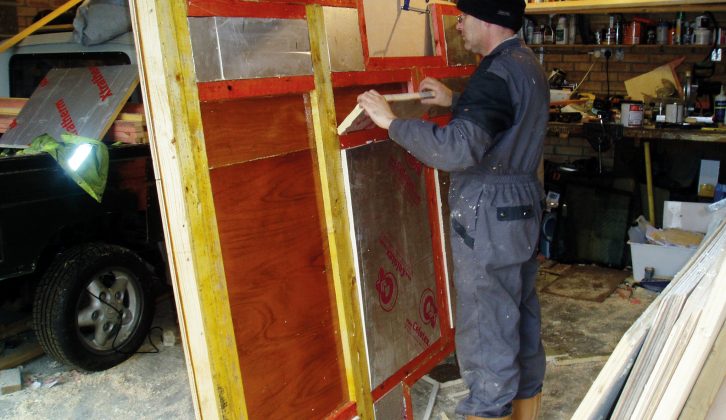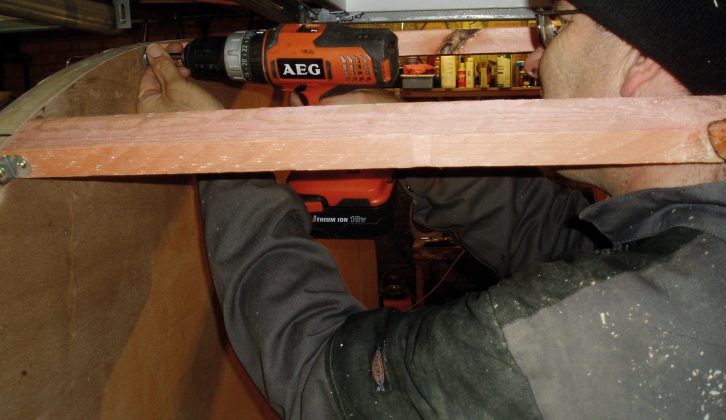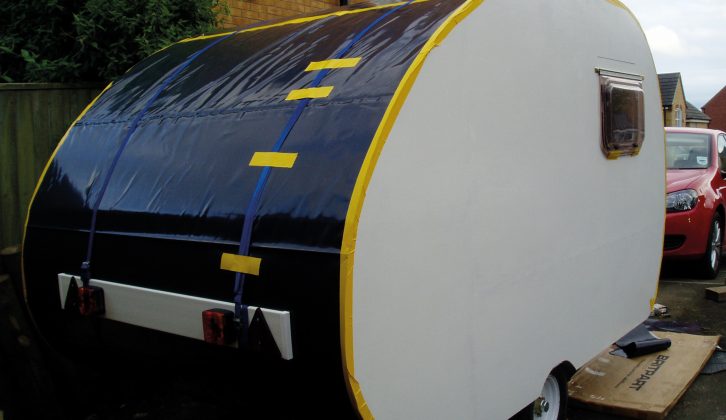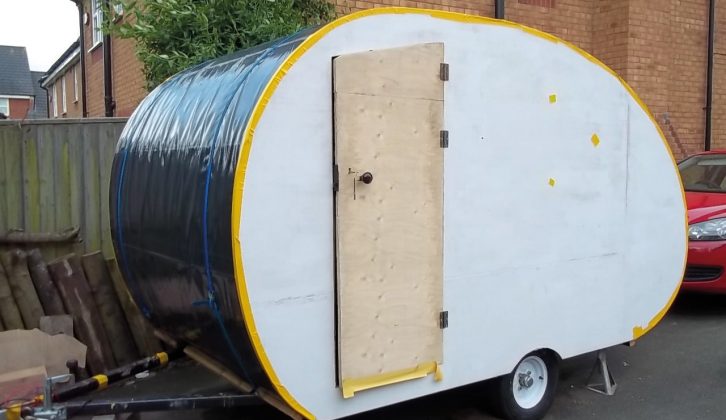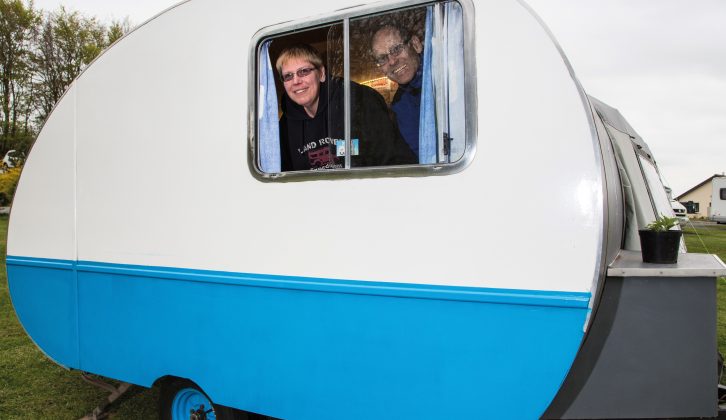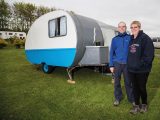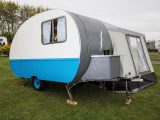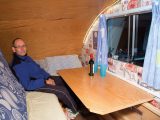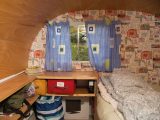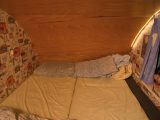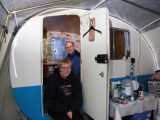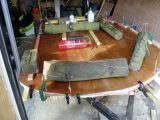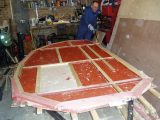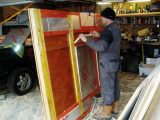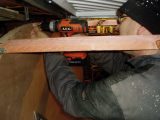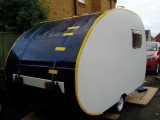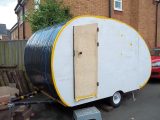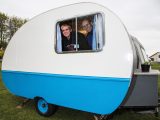Among the rows and rows of caravans pitched at this year’s Practical Caravan Reader Rally at Stowford Farm Meadows in Devon, my colleagues and I spotted one very interesting-looking van.
With a lightning bolt painted across its front, this tourer was definitely unique. I just had to have a peek inside and hung around chatting to the neighbours, friends of Tracey and Chris Greenep who own the van, until they returned from a trip to Stowford Farm’s shop.
This is unmistakably a project caravan of love that, with plenty of modifications along the way, has already gone through quite a transformation and continues to evolve as it is used. It’s just the kind of thing we like to feature in ‘Me and my caravan‘.
New challenges
Chris, a carpenter by trade, built the teardrop-style van himself in around six weeks, creating the couple’s ideal tourer. It is heated, insulated and has a leisure battery – it even has an awning after several trials to find one that best suited their needs.
Chris and Tracey used to camp under canvas and for a few years had a ‘proper caravan’, but didn’t use it much. It was stored away from home, which made planning trips more complicated.
After hearing people talk about hand-built tourers, Chris thought, ‘I could do that’, and set his mind to the project. It made more sense to have solid walls around them for their off-season trips, and Chris’s carpentry skills were definitely up to the job.
“We didn’t like the idea of a traditional teardrop caravan, which is what led us to the ‘widget’ design,” he says. “We wanted it to be big enough to have a king-sized bed and to be warmer and drier than a tent.”
The couple set themselves a deadline by booking the first trip away in the van before they had started building it. They were determined to go, even at such an early stage of the project. It even had a name: ‘Stormcloud.’
Chris began with a 50mm x 50mm steel box-section chassis and used a combination of ply, strengthening batons and rigid board insulation to construct the floor, walls and roof. These were sealed with three coats of wood varnish. The resulting ‘sandwich’ walls were fixed together with D4 expanding adhesive.
It was a learn-as-you-go job for Chris. For example, as he carefully bent, glued and fixed the ply to create the curve of the roof, he discovered that he had not cut a door into the nearside wall. It would have been more sensible the other way around, but he worked it out in the end.
“We downloaded some vague plans from the internet for the basic shape and design, but the rest we made up as we went along. We didn’t set a budget either,” Chris admits.
Having spent only £2080 in total, he and Tracey definitely got a lot of van for their money. The initial construction, which included the steel for the chassis and the plywood, windows and roofing materials, cost just £1200. The rest went on the awning, the electric-and-gas heating, the hook-up and the leisure battery.
Weatherproofing
When it was time for the van’s first trip, however, it wasn’t quite ready. Chris and Tracey had to stay in it with a black plastic roof held on by tape, a temporary wooden door and just one window, which had been rescued from an old caravan.
They returned from the maiden tour to Matlock with the Teardrop Club of Great Britain and carried on working, finishing the roof, fitting the door properly and adding two horse box windows – one in each sidewall.
Inside, it is cosy and dry with a large double bed, storage and even a table that can be set up when you put the bed away. The van is equipped with a 250W tube heater, a 400W convector heater, a 2kW Propex blown-air heater, a 110A leisure battery and a 600W 240V inverter.
This all means that there is plenty of light, heat and electricity to run such essentials as the kettle. However, with space being quite tight in the tiny teardrop, they really wanted an awning to use for the kitchen.
The first they tried was a drive-away awning, which wasn’t ideal because it left open space at the sides that let damp, cold air in. Next, they tried a tunnel tent extension, but this flapped in the wind and was not sturdy enough. This was discovered when camping in the Peak District last winter in -6˚C weather.
It was a case of ‘third time lucky’, though, when they tried a caravan awning that they customised to fit snugly around the curves of their tourer.
The awning provides space to set up the camp kitchen, which is well-stocked and is often the dining area on warm evenings.
The first time they took the caravan away, when it only had a plastic roof, it was just a giant bed. Since then, Tracey and Chris have gradually added under-bed storage, shelving and the flexibility to eat inside, evolving the van’s interior to suit their needs on site.
In fact, it is still evolving, with a new paint job already added this year and plans to add an awning light for cooking in the evenings, plus permanent rear lights, rather than using a trailer board.
Reaping the rewards
What advice does the couple have for others wanting a unique caravan? “Do some research, have a go, don’t be afraid of making mistakes. If you get it wrong, try again, go online and ask for help – there is plenty of advice out there. We would also suggest planning your lighting and power first! It’s much harder to hide the cables otherwise.”
Tracey and Chris are real all-weather campers, using the van all year round to visit friends. In fact, their most memorable trip was asa result of this all-weather touring.
“We went up to Leek and it was so cold that the awning had frost on the inside,” Chris recalls. “This was the trip that made us fit the gas heater!”
So why did Tracey and Chris turn from campers into caravanners? It’s simple, really: comfort. Having a proper bed and solid walls appealed even more when they realised they could build it themselves.
We wanted it to be big enough to have a king-sized bed and to be warmer and drier than a tent
